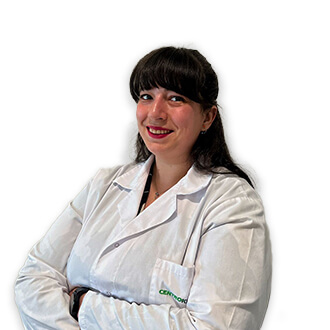.jpg)
Costochondritis (Tietze Syndrome): What It Is, Causes, Symptoms, and Treatment Options
Costochondritis and Tietze syndrome are similar conditions, which is why they are sometimes confused. In costochondritis, pain occurs on the left side of the chest and can spread to the rest of the chest. In Tietze syndrome, pain and tenderness are accompanied by swelling felt in the area of the affected costochondral joints. A specialist doctor is the only one qualified to establish a complete diagnosis and treatment suitable for individual needs.
What is costochondritis?
Costochondritis is a medical condition characterized by the inflammation of the cartilage connected to a rib at the sternum. Chest pain can be severe and, sometimes, can mimic that of a heart attack. This pain can also mimic symptoms of heart conditions, a cause for concern and an urgent reason to see a doctor for a clear and complete diagnosis. (1)
Although costochondritis is sometimes also referred to as Tietze syndrome, the two conditions are different. The only similarity is that in both cases, the patient presents with chest pain. The pathology for these two medical conditions is believed to be localized inflammation. (2)
What is Tietze syndrome?
Tietze syndrome or costochondral junction syndrome is a rare, inflammatory condition that affects one or more of the upper costal joints. Joints and bones are protected by a strong, yet flexible connective tissue. Although this cartilage that connects the ribs to the sternum is rigid, to protect the organs in the thoracic cavity, when inflammation occurs in Tietze syndrome, swelling can be observed at the chest level, and pain is felt around the respective joint. (3)
Symptoms of costochondritis and Tietze syndrome
In the case of costochondritis, the most common symptom is chest pain, which occurs on the left side of the sternum, is sharp, affects more than one rib, and can spread to the arms and shoulders. It usually appears at the second to fifth costochondral junction. The pain can worsen when the patient breathes more deeply, coughs, or sneezes, and also when movements involving the thoracic wall are made. Symptoms of costochondritis typically occur in people over the age of 40.
Tietze syndrome presents similar symptoms to costochondritis. It affects the second or third costal cartilage. Chest pains are accompanied by sensitivity felt on or around the ribs, and the pain can radiate to the shoulder. A sensation of warmth is another sign in this medical condition, along with possible discoloration around the swelling. Sometimes specific manifestations appear suddenly, but they can also develop over time. Therefore, patients can experience a wide range of symptoms, from mild pains to intense discomfort and obvious swelling. Tietze syndrome has often been diagnosed in young adults, up to 40 years old.
The impact of these symptoms on daily life should not be overlooked. Constant pain and discomfort can limit physical activities and affect overall well-being. In this context, medical consultation becomes necessary. (1), (3), (4), (5)
Causes of costochondritis and Tietze syndrome
Costochondritis and Tietze syndrome do not have a clear cause, but there are a number of risk factors that can contribute to their development. Costochondritis may occur due to trauma, diseases - such as in some types of arthritis - or in situations of intense physical effort, but also in severe coughing. (1)
In Tietze syndrome, repeated activities on the ribs that put pressure, such as microtraumas - include coughing, vomiting, infections, blows, car accidents, falls, sports injuries - can be possible causes of this condition. (3)
Methods of diagnosing costochondritis and Tietze syndrome
The methods of diagnosing costochondritis and Tietze syndrome are primarily based on physical examination. The doctor can perform a physical examination to detect swelling or inflammation in the intercostal area. Gentle pressure can be applied to the chest to check if this causes pain.
In case the physical examination is not sufficient to establish a clear diagnosis, imaging tests may be recommended. These can include X-rays, ultrasounds, MRI, or even CT scans, to rule out other possible causes of the symptoms. Imaging tests can help identify inflammation or other structural abnormalities that could be causing the pain.
Blood tests can also be used in the diagnostic process. They can be used to rule out other conditions, such as infections or rheumatic diseases, that may have similar symptoms. The specialist doctor may also recommend an electrocardiogram, ECG or EKG, to exclude abnormalities that are frequently associated with infectious causes of chest pain. (4), (5), (6), (7)
Treatment Options for Costochondritis and Tietze Syndrome
Medication Treatment
Medication treatments are the first option in therapy for costochondritis and Tietze syndrome. Nonsteroidal anti-inflammatory drugs are frequently prescribed to alleviate pain and reduce inflammation. Depending on the intensity of the symptoms, other types of medications, such as painkillers or muscle relaxants, may also be recommended. There are cases in the medical literature where good results have been obtained with other medications, such as some antidepressants and anticonvulsants, in the treatment of costochondritis.
Physical Therapy
If pain and inflammation persist, physical therapy becomes a beneficial option. This can include stretching and strengthening exercises, designed to help reduce pain and improve mobility. Physiotherapy is an effective treatment option for a variety of musculoskeletal conditions, including costochondritis and Tietze syndrome.
Kinesiotherapy and chiropractic treatment can bring some benefits, as they contribute to improving the mobility of the affected ribs.
Injectable Treatment
In some situations, injections with corticosteroids or steroids, which can be administered in the affected costochondral areas, may be considered. However, this option is rarely necessary and is resorted to only if other treatment methods do not provide relief from painful symptoms.
Complementary Treatment
Alongside traditional treatment methods, some people may find help in alternative therapies. These can include acupuncture, therapeutic massage, heat and cold therapy, or relaxation techniques, such as yoga or meditation.
In addition, adopting healthy habits can contribute to preventing the recurrence of symptoms. The habits referred to here include maintaining correct posture, avoiding excessive or intense physical efforts, and effectively managing stress. (4), (5), (6), (7)
The onset of intense chest pains can be frightening. Most people who experience such symptoms immediately think of a heart attack. Chest pains can be caused by costochondritis or Tietze syndrome. From the first manifestations, patients must go to the doctor for a specialist diagnosis and suitable treatment!
Sources of information:
- 1. Costochondritis - here. Accessed 06.02.2024
- 2. Costochondritis - here, Accessed 06.02.2024
- 3. Tietze Syndrome - here, Accessed 06.02.2024
- 4. Costochondritis and Tietze Syndrome Symptoms Can Mimic Heart Attack - here, Accessed 06.02.2024
- 5. Costochondritis and Tietze's Syndrome - here, Accessed 06.02.2024
- 6. Costochondritis - here, Accessed 06.02.2024
- 7. Tietze Syndrome - here, Accessed 06.02.2024
MAKE AN APPOINTMENT
FOR AN EXAMINATION
See here how you can make an appointment and the location of our clinics.
MAKE AN APPOINTMENT



































































































































